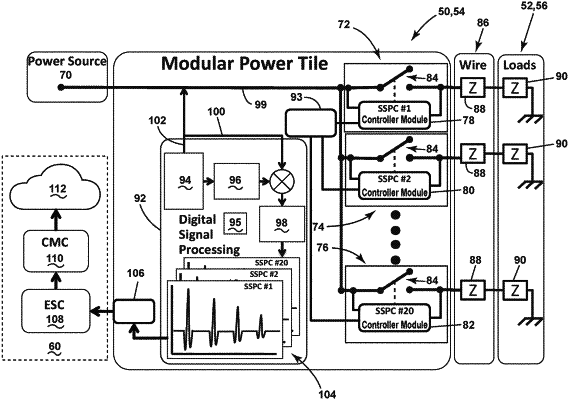| CPC G01R 27/16 (2013.01) [G01R 31/58 (2020.01)] | 18 Claims |

|
6. A method of operating an electrical network, the method comprising:
generating a set of predetermined identifying patterns by a reflectometry module of a power distribution node, the reflectometry module including a delay module, a summation module, a reflection line, and a code generator, each predetermined identifying pattern being respectively specific to a power switching device from a set of power switching devices disposed on a common modular power tile;
injecting, by the reflectometry module, at least one predetermined identifying pattern into a voltage signal provided by a power source, the power source being selectively connected via a respective power switching device with an electrical load during a routine power supplying operation of the electrical load, the selective connecting controlled by way of the power distribution node;
receiving, by the delay module, a reflected incident signal of the at least one respective specific predetermined identifying pattern during the routine power supplying operation;
receiving, by the summation module, the reflected incident signal of the at least one predetermined identifying pattern from the delay module after a delay time to obtain a correlation coefficient between the respective specific predetermined identifying pattern and reflected incident signal;
comparing, by the reflectometry module, the at least one predetermined identifying pattern with the reflected incident signal;
determining an impedance network characteristic for at least one conductor connecting the electrical load with the power distribution node or determining an impedance network characteristic for the electrical load, based on the comparing; and
scheduling a maintenance task based on the determined impedance network characteristic.
|